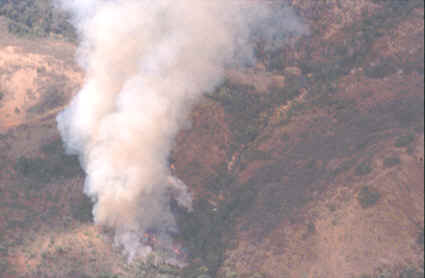10.5 Wildfires
Nowadays wildfires are becoming increasingly common in the world because of frequent heatwaves and hot, dry conditions resulting from climate change. A forest fire is called a wildfire when it spreads very rapidly over a large area and is extremely difficult to bring under control (Figure 10.9). In many countries, including Ethiopia, the United States, Russia and Australia, wildfires are common during the dry season and especially in severe droughts. More than 200,000 hectares of forest are lost every year in Ethiopia because of fires (Kovats et al., 2003). Climate change is expected to increase the intensity and frequency of droughts in many parts of Ethiopia, increasing the risk of more severe and frequent forest fires.

Wildfires are dangerous because they spread so quickly, destroying large areas of forest, damaging buildings and infrastructure, and killing any people, livestock and wildlife that cannot escape. Wildfires also have effects on human health through the emission of pollutants such as ash, toxic gases, dusts and debris into the atmosphere. Respiratory problems like asthma andbronchitis are made much worse if the air quality is contaminated with these products of burning vegetation.
Wildfires can also severely affect water quality. When the debris and ash are washed away by rain, they enter water sources such as rivers, streams and wells. The water can become cloudy with ash, taste or smell smoky or earthy, and contain toxic chemicals from burnt wood, which in turn can have adverse health effects if used for drinking (Waskom et al., 2013).
10.4 Heatwaves
